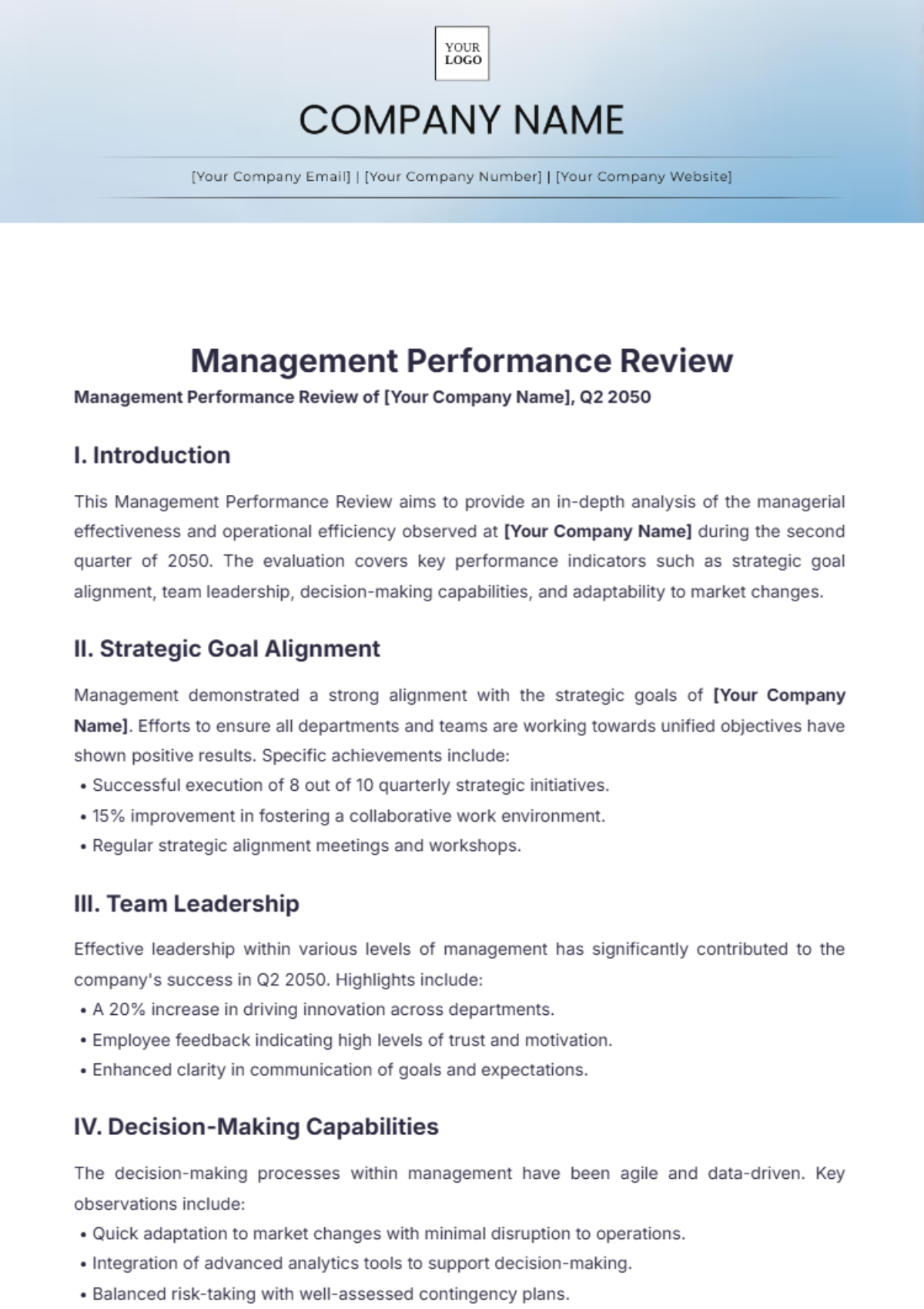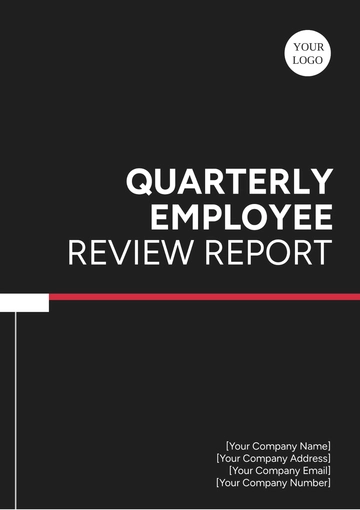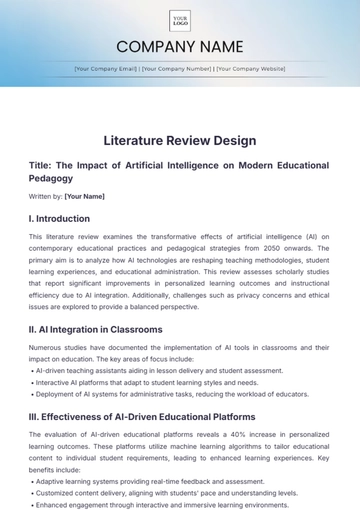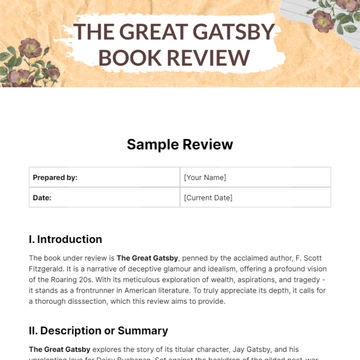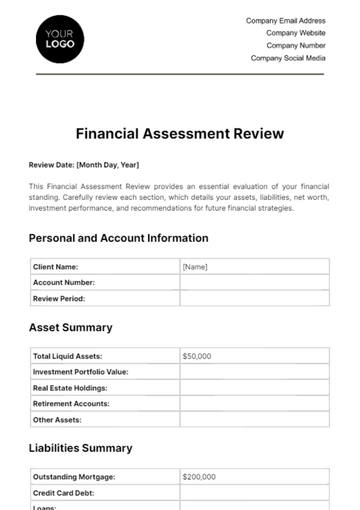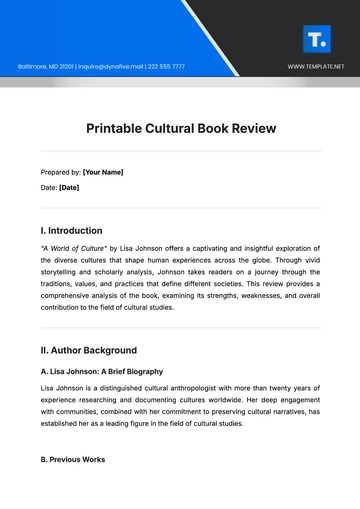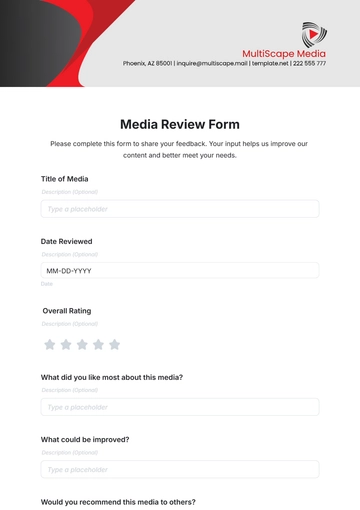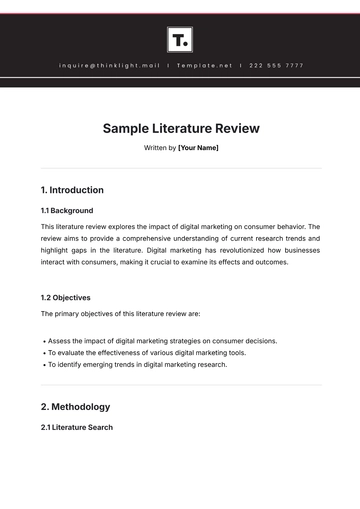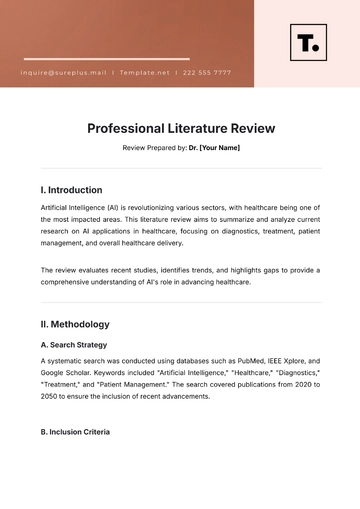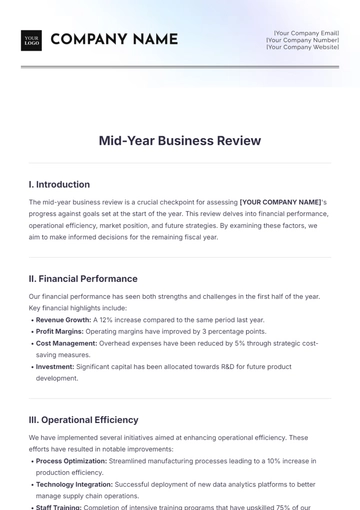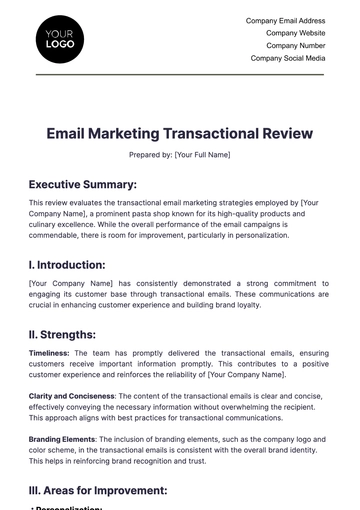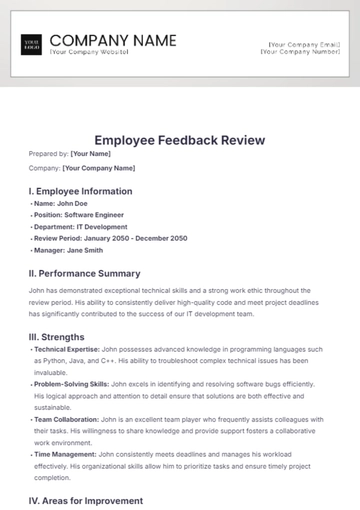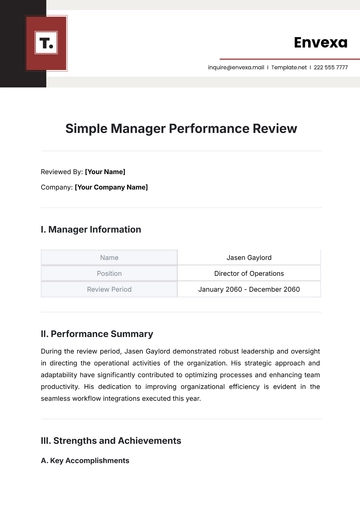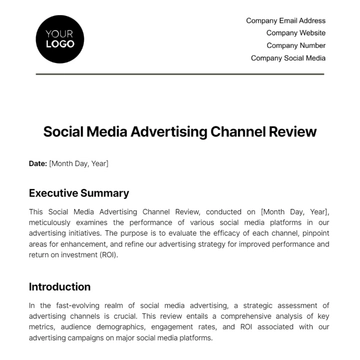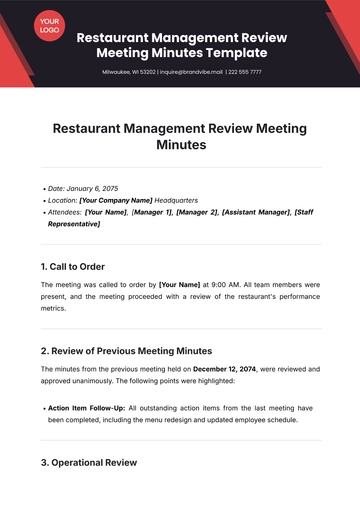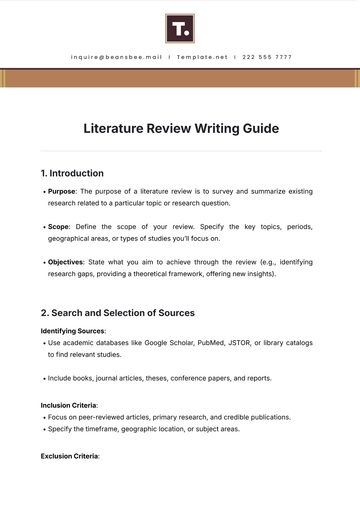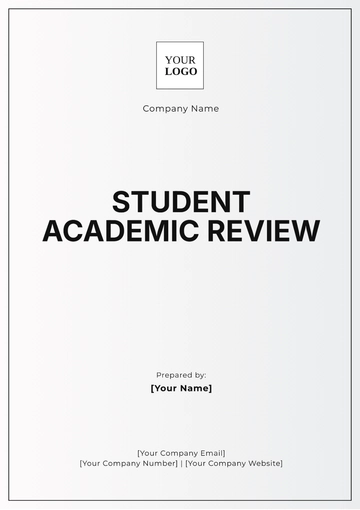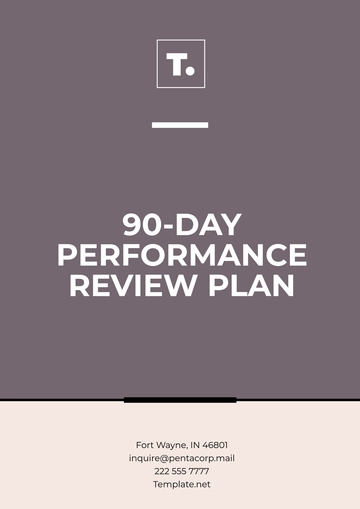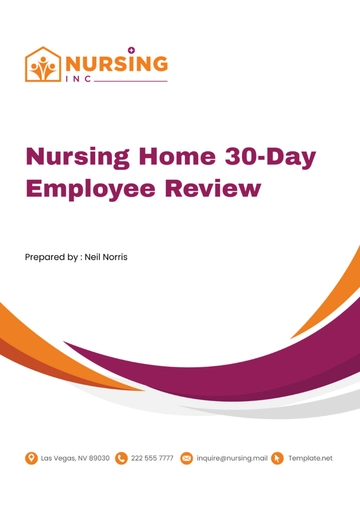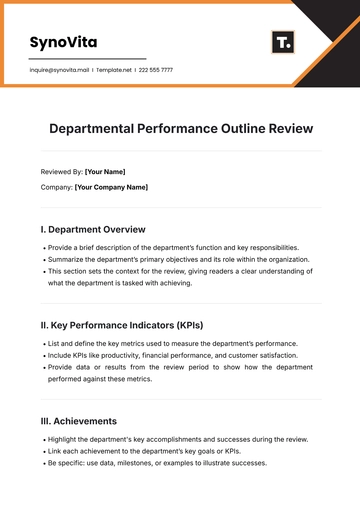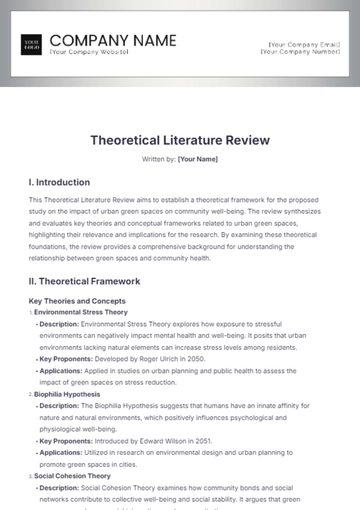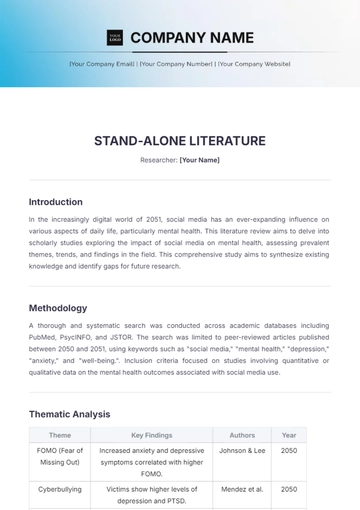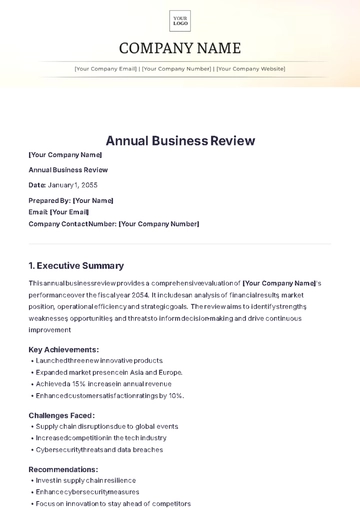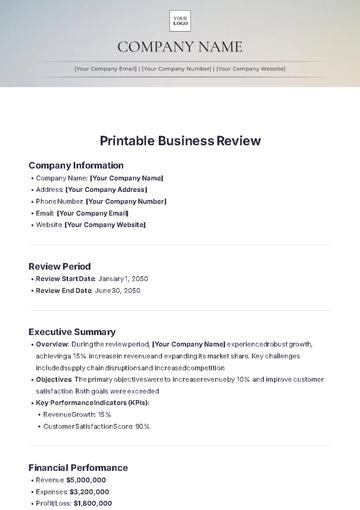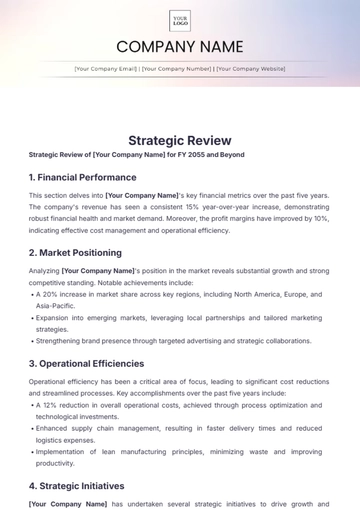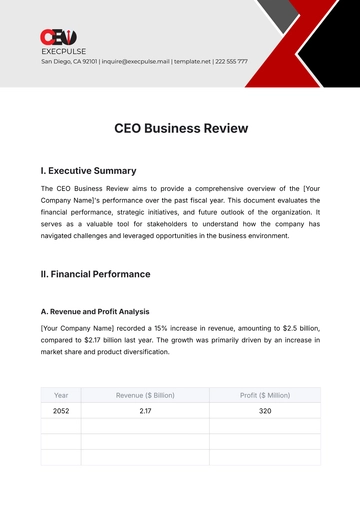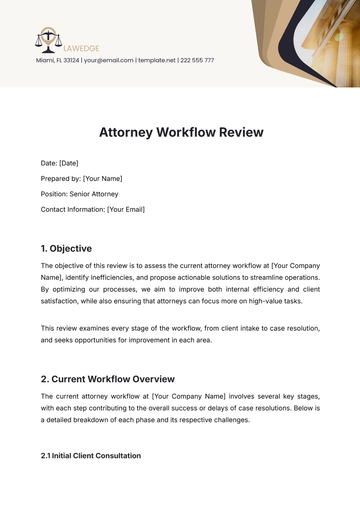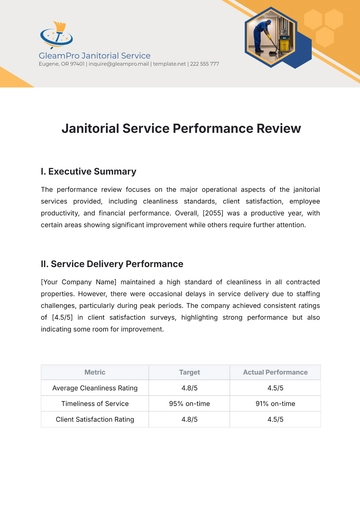Management Performance Review
Management Performance Review of [Your Company Name], Q2 2050
I. Introduction
This Management Performance Review aims to provide an in-depth analysis of the managerial effectiveness and operational efficiency observed at [Your Company Name] during the second quarter of 2050. The evaluation covers key performance indicators such as strategic goal alignment, team leadership, decision-making capabilities, and adaptability to market changes.
II. Strategic Goal Alignment
Management demonstrated a strong alignment with the strategic goals of [Your Company Name]. Efforts to ensure all departments and teams are working towards unified objectives have shown positive results. Specific achievements include:
Successful execution of 8 out of 10 quarterly strategic initiatives.
15% improvement in fostering a collaborative work environment.
Regular strategic alignment meetings and workshops.
III. Team Leadership
Effective leadership within various levels of management has significantly contributed to the company's success in Q2 2050. Highlights include:
A 20% increase in driving innovation across departments.
Employee feedback indicating high levels of trust and motivation.
Enhanced clarity in communication of goals and expectations.
IV. Decision-Making Capabilities
The decision-making processes within management have been agile and data-driven. Key observations include:
Quick adaptation to market changes with minimal disruption to operations.
Integration of advanced analytics tools to support decision-making.
Balanced risk-taking with well-assessed contingency plans.
V. Adaptability to Market Changes
Management's ability to respond to market dynamics has been commendable. Adaptive strategies implemented include:
Proactive shifts in product and service offerings to meet emerging demands.
Continuous monitoring of market trends and competitive landscape.
Implementation of flexible workforce models to address variable market conditions.
VI. Resource Allocation Efficiency
Despite overall positive performance, there has been a 10% decrease in resource allocation efficiency. Challenges identified include:
Underutilization of certain technological resources.
Delays in redeployment of human resources to critical projects.
Inefficiencies in supply chain management causing minor operational bottlenecks.
VII. Long-Term Planning Effectiveness
Long-term planning effectiveness has seen a slight decline of 5%. Areas for improvement include:
Enhanced forecasting methods for better future-readiness.
More rigorous analysis of long-term market shifts.
Integration of sustainable practices in long-term strategic plans.
VIII. Employee Satisfaction and Feedback
Employee satisfaction remains a critical indicator of management performance. Key findings include:
An overall management approval rating of 82%, up from 75% in the previous quarter.
Positive feedback on leadership effectiveness and support for professional development.
Constructive suggestions for improvement, particularly in work-life balance initiatives.
IX. Conclusion
The Management Performance Review for Q2 2050 highlights several strengths and areas for improvement at [Your Company Name]. While significant advancements have been made in fostering collaboration and innovation, opportunities remain to enhance resource allocation and long-term planning. The insights derived from this analysis will inform actionable strategies for further enhancing management practices and overall organizational performance.
Review Templates @ Template.net
